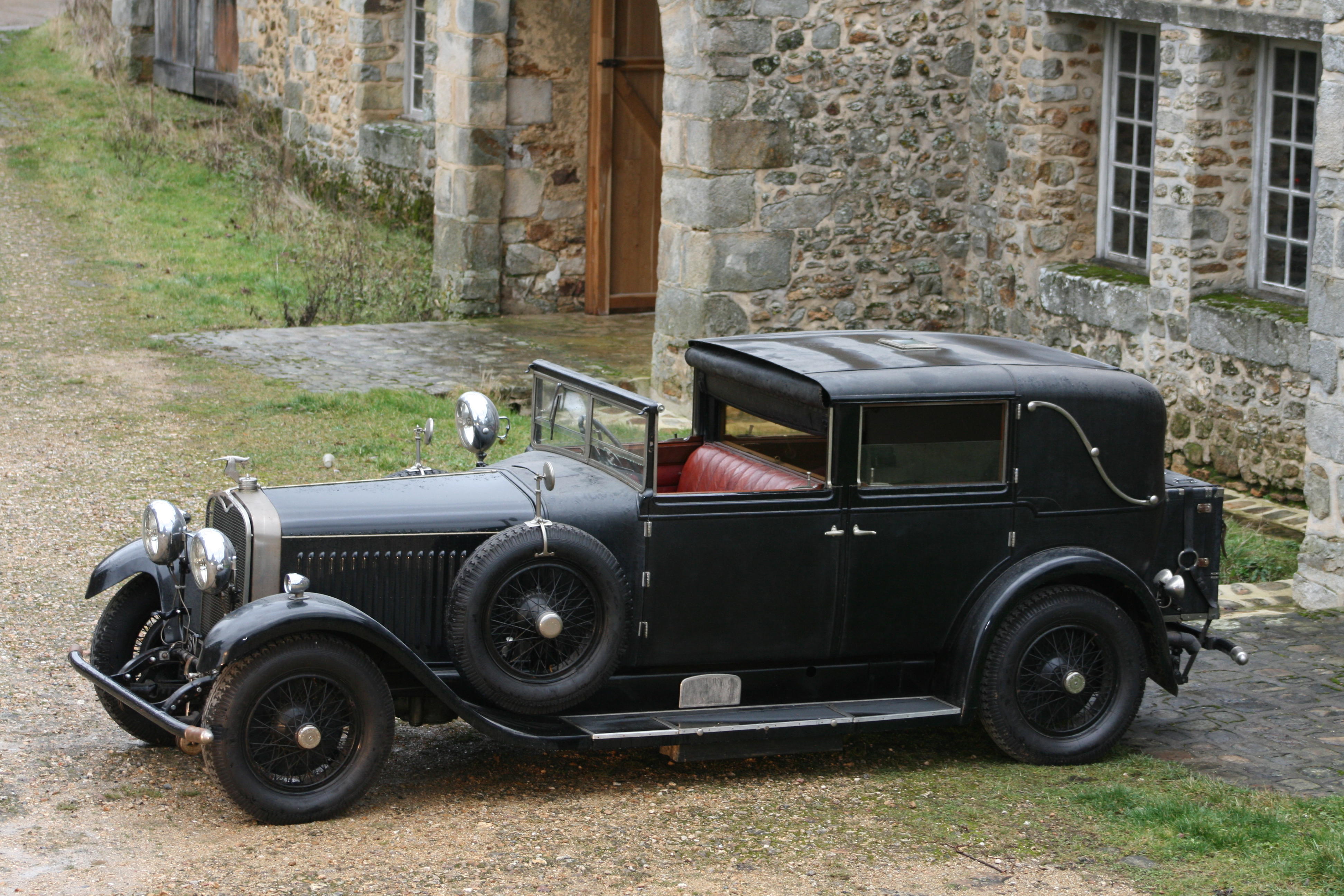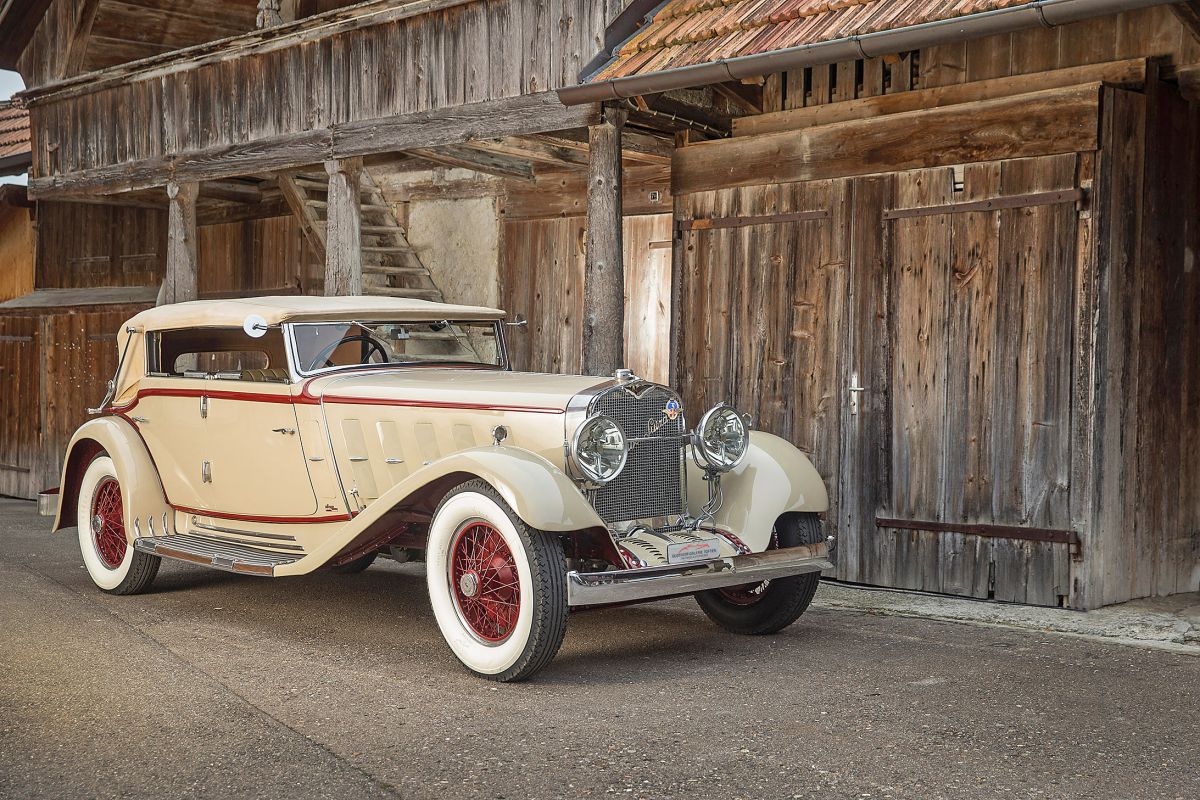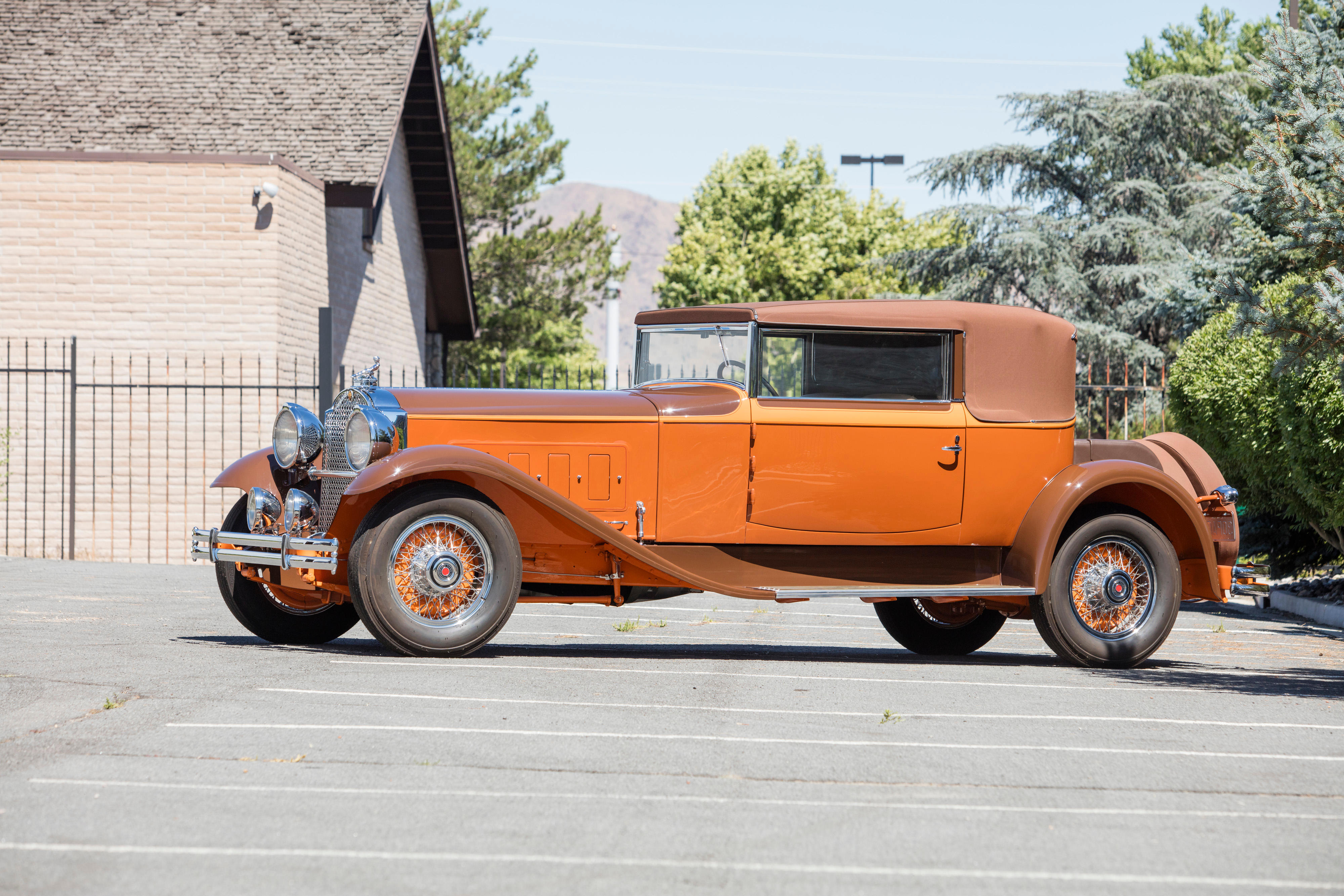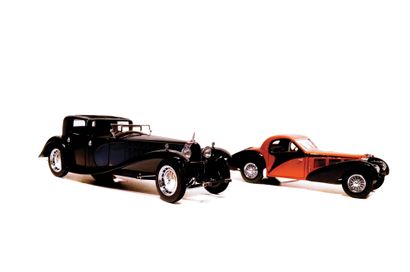6,597cc SOHC Inline 6-Cylinder Engine 160bhp at 3,000rpm 3-Speed Manual Transmission 4-Wheel Leaf Spring Suspension 4-Wheel Servo-Assisted Mechanical Drum Brakes *Luxurious French Classic Era Automobile *Ordered new by Mrs. Potter Palmer *Successive major collection ownerships in the US *Former Pebble Beach Concours d'Elegance prize winner HISPANO-SUIZA The choice of European royalty, Indian Maharajahs, Hollywood film stars and industrial tycoons, the legendary Hispano-Suiza was superbly engineered and imitated unashamedly by some of the world's leading car manufacturers. The genius of Swiss engineer Marc Birkigt had been proven by Georges Guynemer's 'Escadrille Cigogne' (Stork Squadron), of Hispano-Suiza-engined Spad fighter planes in World War I. It was this same brilliance that was reflected in the sensational and finely engineered new H6 cars built in Paris at the Bois Colombes factory and unveiled to the world in 1919. The H6B model followed for the 1922 season. For the first time in 1919 the radiator emblem 'La Cigogne Volante' appeared, the insignia of Captain Georges Guynemer's Stork Squadron of Hispano-Suiza-engined Spads. The mascot adorned the radiator of the new H6, an all new six-cylinder car of 6,597cc capacity which was to be the mainstay of production for some fifteen years. The model was renowned for its ease of handling, the flexibility of its engine – which necessitated only a three speed gearbox – and its efficient servo-assisted brakes, a design later to be adopted by Rolls-Royce. Subsequent significant developments of the H6 included the Monza and the exciting short chassis 8-liter Boulogne. Reflecting aero engineering technology, the new car made the other 'hyphenated greats', Rolls-Royce, Isotta-Fraschini and Pierce-Arrow, take notice. The H6B Hispano-Suiza found favor with the rich, the discerning and the famous. THE MOTORCAR OFFERED Some collectors collect pairs of cars, but for Frank Spain cars had a habit of coming in threes, as with Alvis and Lagonda, this would be the third Hispano-Suiza to join the collection. In doing so, it shows the breadth of the offerings from this hallowed brand, but of the three it is this that has more of the grandeur that one associates with the marque. Luxury automobiles of this era of Continental European manufacturing were a marriage of refined engineering and exquisite coachwork hand tailored for their clientele. As times evolved from the 1910s, when it was quite possible that one may have had the bodywork on their cars changed between summer and winter to suit the climate in which a car were used, coachbuilders began providing more and more options of versatile, transformable bodywork, particularly suited to those that might well have required 'town and country' use. In this case, the craftsmen behind this fully convertible Cabriolet de Ville body, were the coachbuilders J. Fernandez of Paris. Fernandez is a name more often associated with Dutch Darrin, and the Fernandez and Darrin concern that they formed in 1931. That partnership was a huge success, marrying the wealthy Argentinian born Parisian's coachbuilding business with Dutch Darrin's American flair for design. It is name frequently connected to Hispano-Suiza automobiles. This example predates the advent of that joint venture, but certainly mirrors the quality of build of those that succeeded it, making it a very appealing automobile. Unusually, it is one that would almost certainly have been delivered new to the American market, for its first owner was Mrs. Potter Palmer of Chicago. Over time, this is perhaps not a name that still resonates in the same way today, but to put Potter Palmer in context, he was a major retail pioneer, who focused specifically on encouraging women to be comfortable and buy from his Potter Palmer & Co. store. More than 160 years ago he instilled a no questions asked returns policy and even allowed his patrons to try good at home before purchasing – things are never as new as they s
6,597cc SOHC Inline 6-Cylinder Engine 160bhp at 3,000rpm 3-Speed Manual Transmission 4-Wheel Leaf Spring Suspension 4-Wheel Servo-Assisted Mechanical Drum Brakes *Luxurious French Classic Era Automobile *Ordered new by Mrs. Potter Palmer *Successive major collection ownerships in the US *Former Pebble Beach Concours d'Elegance prize winner HISPANO-SUIZA The choice of European royalty, Indian Maharajahs, Hollywood film stars and industrial tycoons, the legendary Hispano-Suiza was superbly engineered and imitated unashamedly by some of the world's leading car manufacturers. The genius of Swiss engineer Marc Birkigt had been proven by Georges Guynemer's 'Escadrille Cigogne' (Stork Squadron), of Hispano-Suiza-engined Spad fighter planes in World War I. It was this same brilliance that was reflected in the sensational and finely engineered new H6 cars built in Paris at the Bois Colombes factory and unveiled to the world in 1919. The H6B model followed for the 1922 season. For the first time in 1919 the radiator emblem 'La Cigogne Volante' appeared, the insignia of Captain Georges Guynemer's Stork Squadron of Hispano-Suiza-engined Spads. The mascot adorned the radiator of the new H6, an all new six-cylinder car of 6,597cc capacity which was to be the mainstay of production for some fifteen years. The model was renowned for its ease of handling, the flexibility of its engine – which necessitated only a three speed gearbox – and its efficient servo-assisted brakes, a design later to be adopted by Rolls-Royce. Subsequent significant developments of the H6 included the Monza and the exciting short chassis 8-liter Boulogne. Reflecting aero engineering technology, the new car made the other 'hyphenated greats', Rolls-Royce, Isotta-Fraschini and Pierce-Arrow, take notice. The H6B Hispano-Suiza found favor with the rich, the discerning and the famous. THE MOTORCAR OFFERED Some collectors collect pairs of cars, but for Frank Spain cars had a habit of coming in threes, as with Alvis and Lagonda, this would be the third Hispano-Suiza to join the collection. In doing so, it shows the breadth of the offerings from this hallowed brand, but of the three it is this that has more of the grandeur that one associates with the marque. Luxury automobiles of this era of Continental European manufacturing were a marriage of refined engineering and exquisite coachwork hand tailored for their clientele. As times evolved from the 1910s, when it was quite possible that one may have had the bodywork on their cars changed between summer and winter to suit the climate in which a car were used, coachbuilders began providing more and more options of versatile, transformable bodywork, particularly suited to those that might well have required 'town and country' use. In this case, the craftsmen behind this fully convertible Cabriolet de Ville body, were the coachbuilders J. Fernandez of Paris. Fernandez is a name more often associated with Dutch Darrin, and the Fernandez and Darrin concern that they formed in 1931. That partnership was a huge success, marrying the wealthy Argentinian born Parisian's coachbuilding business with Dutch Darrin's American flair for design. It is name frequently connected to Hispano-Suiza automobiles. This example predates the advent of that joint venture, but certainly mirrors the quality of build of those that succeeded it, making it a very appealing automobile. Unusually, it is one that would almost certainly have been delivered new to the American market, for its first owner was Mrs. Potter Palmer of Chicago. Over time, this is perhaps not a name that still resonates in the same way today, but to put Potter Palmer in context, he was a major retail pioneer, who focused specifically on encouraging women to be comfortable and buy from his Potter Palmer & Co. store. More than 160 years ago he instilled a no questions asked returns policy and even allowed his patrons to try good at home before purchasing – things are never as new as they s













Try LotSearch and its premium features for 7 days - without any costs!
Be notified automatically about new items in upcoming auctions.
Create an alert